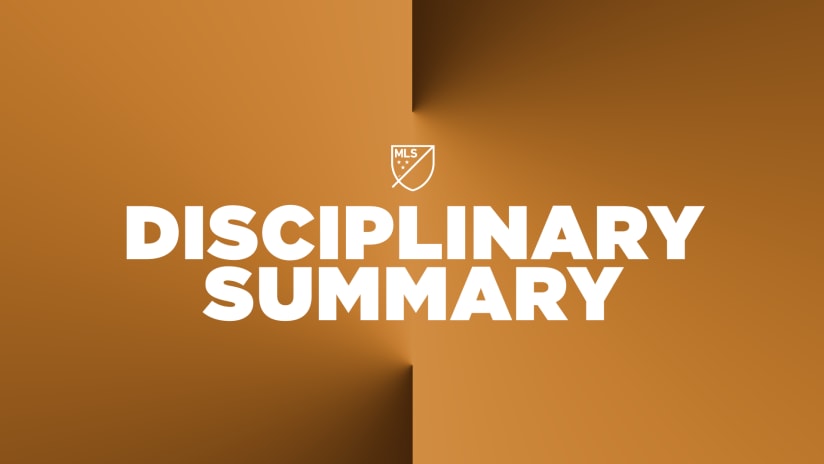Cheers to ESPN's Marc Connelly for giving me my lede:
I mostly agree with him, though please rest assured this doesn't mean I'm going to avoid discussing tactics after USA's 1-1 draw at the Azteca against Mexico, a result that leaves the Yanks in strong position to qualify for next summer's World Cup and damn near memory holed – finally – the disastrous start to the Hexagonal.
The whole point of this column of mine is to get lost in the weeds about the granular stuff in the game, but in so doing I (and you, my lovely readers, occasionally join me in this I'm sure) occasionally lose sight of the obvious: Sometimes great players make great plays. Michael Bradley gets a read half-a-step before anybody else on the field and takes a gamble that results in the goal of a lifetime. Carlos Vela realizes that Javier "Chicharito" Hernandez's gravity has drawn both Kellyn Acosta and Geoff Cameron out of the lane, so he scorches one to the near post.
Those were great goals. Blame will be assigned and distributed of course, and every tape of every meaningful incident is worth both watching and dissecting. But let's not lose sight of the fact that great players making great plays is why we watch this game in the first place.
Anyway, the USMNT now have eight points from four qualifiers under Bruce Arena, and six games overall. That's good for third behind El Tri and Costa Rica, the latter of which will play on Tuesday night.
Here's what I saw:
• There's literally nothing I can say about Bradley's goal that will improve the experience of watching the actual highlight, so here you go:
It's a dream start for the #USMNT! The captain Michael Bradley puts them up 1-0 early against Mexico. #USAvMEXhttps://t.co/PFojp1uVpG
— FS1 (@FS1) June 12, 2017
As you can see, he both jumped the angle of Chicharito's attempted lay-off, and wrong-footed Hector Herrera in the process so that the seas parted. It was as great a goal as the US have ever scored in qualifying.
The thing that struck me about it, though, was that the US were much more front-foot than I'd expected for the first 15 minutes of the game. I expected them primarily to absorb pressure, even in midfield, but for the first quarter-hour both Bradley and Acosta, as well as Paul Arriola and Christian Pulisic, were quick and specific at pressuring their counterparts in certain zones.
This group was dialed in.
• The 5-4-1 has been around two decades longer than I've been alive, though it's never been a formation particularly in vogue because of the obvious: It tends to play very defensive. And such was the case on Sunday as the US were out-possessed 73.7% to 26.3%, which is a lot of pressure to absorb even for a well schooled team.
But Arena's no dummy, and my guess is he's been watching Costa Rica play in this very shape for the better part of a decade. The Ticos flummoxed all comers with this exact 5-4-1 back in the 2014 World Cup, and they danced a jig on the USMNT's head while playing out of a 5-4-1 last November in Jurgen Klinsmann's managerial swansong.
Great managers steal what works and make it theirs. In CONCACAF, and at altitude, and on short rest, the 5-4-1 works.
There are two keys to this formation, which naturally slumps off into almost a concave shape, conceding central midfield diagonals to the flanks but refusing penetrative, between-the-lines passes into the gaps.
First is that the left center back and the right center back have to act as pistons, popping off the backline and into central midfield to add ad hoc numbers in that part of the pitch when the attack threatens to flatten the lines too much. Think back to this game, and recall how many times Omar Gonzalez or Tim Ream (who had, by far, his finest performance in Red, White & Blue) would come out into the channels and be defending along the same latitude as Acosta or Bradley.
I'm stunned at the coordination they had, together, in their first outing and on such a big stage. Mexico were not able to create chances from possession.
Second is that the wingbacks – the wide defenders in the back five – have to get out wide early and never allow opposing wingers to get around the edge. If that happens, a back five falls apart.
This is why DaMarcus Beasley deserves almost zero blame for Vela's goal. He did the right thing in forcing Vela inside, but the help wasn't quite sorted, and Vela made a great play. So it goes.
• Let's look at that goal, because it was a peach:
Carlos Vela has equalized for Mexico! Game. On. #USAvMEXhttps://t.co/TESnWekp5I
— FOX Soccer (@FOXSoccer) June 12, 2017
Notice how both Cameron and Acosta are so concerned about Chicharito that they run themselves out of position to help Beasley? That's about as good an example of "gravity" as you'll get. Chicharito is such a scoring threat that guys overcompensate in an effort to track him, and smart teammates can and do use that to their advantage.
About the only risk Arena took today that didn't pay off was sending so many players forward on that particular corner kick, and the killer thing about this dumb game of ours is that it should've paid off. Bobby Wood – who put in a dogged but ultimately ineffective shift, and has very much earned a summer off to rest – somehow whiffed from five yards out. That would've made it dos a cero, but 15 seconds later it was 1-1.
So it goes.
• Juan Carlos Osorio made the right sub in bringing Jesus Gallardo (a very attacking fullback) on for Oswaldo Alanís (very not that) after half an hour, but Gallardo and Hirving Lozano never could quite get into sync while the guy they were mostly going against, DeAndre Yedlin, seemed to get stronger as the game went along.
Yedlin, save for one blown offside trap in the first half, was outstanding.
Mexico crossed the ball 25 times against a five-man backline with three central defenders standing 6-foot or taller. They managed just one shot on goal, and just 10 in total. So while Osorio made the right sub, he never really did find the right tactical answer to what the US were doing.
This game was screaming out for Oribe Peralta from a Mexico point of view, for his ability to pull off the line, occupy one of those defenders with his back to goal, and create plays. It's bizarre he didn't get on the field, because doing that exact thing would've opened up plenty of space for wingers like Lozano and Vela to duck inside into the gaps that are created by that type of forward play.
• Today was obviously a good example of why I'm still a firm believer that Bradley is and should remain the man for the US at defensive midfield. It's also a good example of why Cameron has to remain on the backline.
When he's out there, the US shape is always good and the whole line is always connected. Pulisic's is the first name on the teamsheet for me, Cameron's is the second and Bradley's the third.
• Acosta has maybe become a starter? At the very least he's giving Arena real options, and many of the best bits of US play came from both his passing and movement. The US have never been particularly good in a 4-2-3-1, but with him as a box-to-box No. 8 next to a more stationary Bradley, and with Pulisic as a free roaming No. 10 in the middle of that "3" line (nominally)... that'll give teams fits.
It's a young man's game, and the youngsters in the US keep getting better.
• Brad Guzan has started two qualifiers at the Azteca and the US have two draws in those games.
• The US are now 3-0-4 across all seven games under Arena. Vela's goal was just the third conceded in those seven games, and the first from open play.
• It feels like the US are just about through to the World Cup, but beware:
Costa Rica will come to town in September knowing exactly what they want to do, and exactly how to do it. It'll be a dance with which the US are – as they showed tonight – perfectly familiar.













